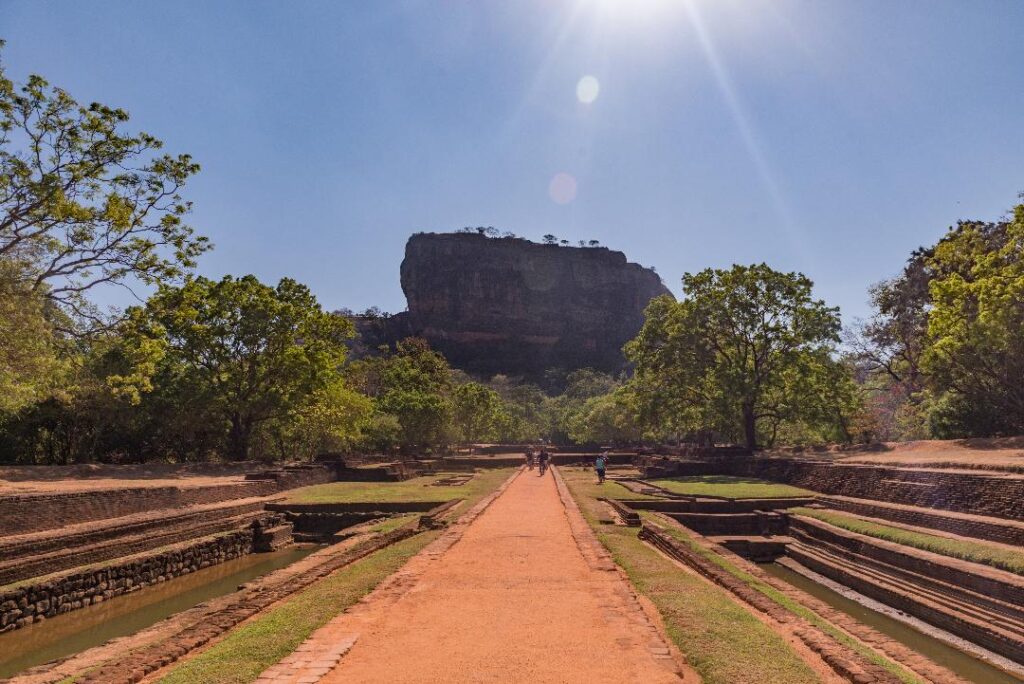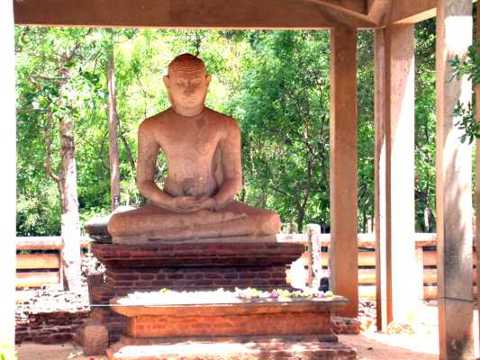The cave temple complex of Dambulla,
A monastic settlement of the 2nd century BC, the Dambulla cave temple has been a destination for pilgrims since its establishment. The rock rises over 400 ft. above the ground and consists of 5 cave temples spread throughout 50 acres of land. The magnificence of the cave temples lies in the abundance of art, depicted on well preserved Wall and Ceiling paintings covering an area of 22,000sqft, from which you can see how artists are inspired by religion. Admire the rich collections of 154 Sri Lankan sculptures in the form of large Buddha statutes in standing, seated & recumbent postures and some outstanding figures of gods.

Sigiriya Rock Fortress
One of Asia’s 7 major archaeological sites and one of the World Heritage Sites in Sri Lanka, the Sigiriya rock fortress presents a unique example of 5th century urban planning, architecture, gardening, engineering, hydraulic technology and art. Sigiriya is best known for the rock paintings of the heavenly maidens “Apsaras” and is an outstanding example of the classical school of Sri Lankan painting. The Lion staircase, Mirror wall, and beautifully designed water garden all add to the richness of the site. The 1.2 hectare area at the top of Sigiriya is a mosaic of low brick walls, terraces, platforms and pools carved out of rock.

Minneriya National Park
The Minneriya Wildlife sanctuary designated as a national park in the late 90’s is a must see for any wild life enthusiast and historian. Home to a tank built by then King of Sri Lanka, King Mahasen (3rd Century AD), and the area is a feeding ground for elephants during the dry (May- September) season where herds of about 300 elephants gather. This gathering of elephants at this location has been declared by the Lonely Planet guide as “the sixth greatest wildlife spectacle in the world.”

Ancient City of Polonnaruwa
The Ancient City of Polonnaruwa is a World Heritage Site. You may choose to visit
The “Gal Vihara” – an array of granite carvings of the Buddha constructed in the 12th century, all belonging to one of Parakramabahu’s (King of Polonnaruwa) monasteries.
The Polonnaruwa Quadrangle to stroll through podiums adorned with intricate stone carvings.
The “Vatadage” – which is the finest preservation of a “vatadage” in the nation, with two stone

Rose quartz mountain
The largest ironwood (MesuaFerara) forest and pink quartz mountain range in South Asia, Namal Uyana is a listed heritage site. The forest believed to have been declared a human sanctuary in the 10th Century AD, is a rare forest plantation from the time of King Devanmpiyatissa of Sri Lanka (8th Century AD). Believed to be one of the oldest and largest gardens in South Asia, this forest reserve is home to a mountain range consisting of seven quartz mountains. The rose quartz found here is believed to be what was used in the Taj Mahal, given the unique properties and quality of the quartz crystal.
Kandy
Kandy was the last citadel of the Sri Lankan kings. It is the cultural capital in the island’s centre, home to Sri Lanka’s most important Buddhist temple, the Temple of the Tooth relic. Also the annual Perahera, a world-famous procession, draws visitors from around the globe. Tour leisurely along upper lake drive; visit the local market, a Hindu temple and the Royal Botanical Garden, at Peradeniya, in the outskirts of Kandy. This botanical garden, consisting of sixty-seven hectares of exquisite beauty and botanical treasures, was the pleasure garden of the royal family.
Nuwara Eliya
Long-established tea plantations produce some the world’s finest tea. Nicknamed “Little England” for its cool, temperate climate, the regional capital Nuwara Eliya contains some famous colonial hotels. A drive through the picturesque mountains, and stop to admire the waterfalls. As you travel, you will see the vegetation change from tropical profusion to cool and gentle green hills. En route, visit a tea factory and witness the process of tea production and taste a cup of Ceylon Tea.

